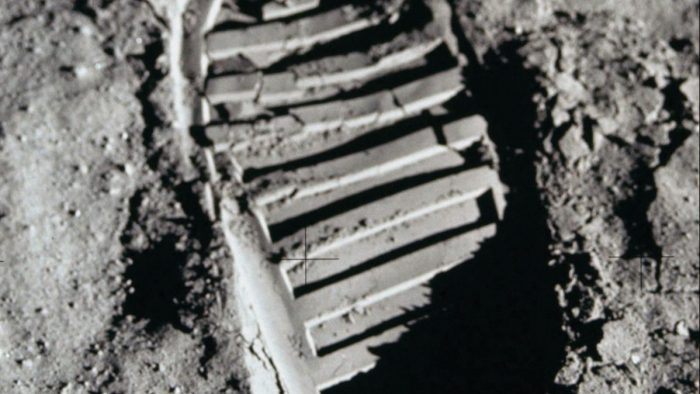 Humanities
Humanities
What a Difference an ‘A’ Makes

When Neil Armstrong stepped onto the moon on July 20, 1969, and made his poetic proclamation, the world heard, “That’s one small step for man, one giant leap for mankind.”
Did the world hear Armstrong wrong?
Armstrong, who died in 2012, insisted for years that his actual words were, “That’s one small step for a man, one giant leap for mankind.” He said the “a” was inaudible.
He later backtracked, and a debate has persisted for decades. In 2006, a computer programmer in Australia analyzed the recording and decided that Armstrong did indeed include an “a”; three years later, two British experts concluded that the critical article had been omitted.
UO linguist Melissa Baese-Berk entered the fray recently. A specialist in speech production, she teamed up with scholars from Michigan State University and Ohio State University to run the astronaut’s utterance through a rigorous linguistics analysis.
The team examined what Armstrong said and what people heard. The two aren’t always the same, of course—words can be hard to hear clearly due to noise or muddled pronunciation.
In these situations, Baese-Berk says, we use context to connect the dots. If someone hears, “I’m hungry for a –eal,” and the last word is unclear, the listener will use the context to fill in the blank with “meal,” rather than, say, “seal” or “wheel.”
But with the Armstrong example—it’s either “for” or “for a”—there isn’t much to go on in terms of surrounding context.
(Visit Online Extras and listen to an audio file of Neil Armstrong’s moon landing—do you hear an “a”?)
Without context, listeners decipher speech through other clues, like speed. When listeners hear someone speaking fast, they predict that they will receive more “acoustic information”—more words. With slower speakers, listeners expect fewer words.
Armstrong was speaking slowly. So in theory, he could have said “for a” but listeners heard only “for,” because they were expecting fewer words.
Baese-Berk and her colleagues put this theory to the test.
The team recruited dozens of listeners and speakers, drawing the latter from near Armstrong’s hometown Wapakoneta, Ohio, to ensure a close match to the astronaut’s dialect.
First, they analyzed how speakers said “for” and “for a” by engaging them in phone conversations that were recorded. Results showed a lot of overlap—that is, regardless of whether the speaker said one or the other, what came out of their mouth was ambiguous. So technically, Armstrong could have uttered either—“for” and “for a” could sound the same, acoustically.
Next, listeners were asked to transcribe sentences that included “for a” at slow and fast speeds. When the phrase was presented slowly, the group missed the “a” nearly twice as often.
So was there an “a” or not? We’ll probably never know for sure.
But Baese-Berk thinks it’s a real possibility that we didn’t hear Armstrong correctly, given what she described as a perfect storm of complications: the absence of context in the sentence, the use of two words that easily blend into one and, of course, the technical difficulties of recording on the moon in 1969.
—Emily Halnon


 Twitter
Twitter Facebook
Facebook Forward
Forward